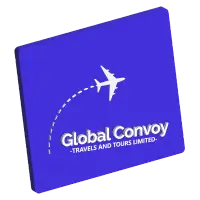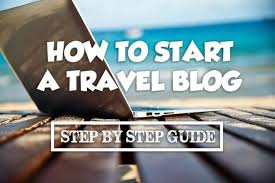Traveling opens the door to unforgettable experiences, new cultures, and stories worth sharing. If you’ve ever thought, “I should write about this trip,” then starting a travel blog might be your best move. A travel blog not only documents your adventures but can also inspire others, help you connect with like minded explorers, and even create income opportunities. Here’s how to get started.
1. Define Your Purpose and Niche
Before you jump into the technical side, ask yourself: Why am I starting this blog?
- Do you want to share personal travel journals with family and friends?
- Do you hope to build a community of travelers?
- Or are you aiming to turn your blog into a business?
Choosing a niche helps you stand out. Examples include:
- Budget travel
- Luxury getaways
- Solo female travel
- Family friendly destinations
- Cultural exploration and food
The clearer your niche, the easier it will be to attract the right audience.
2. Choose a Name and Domain
Your blog name is your brand. Pick something memorable, easy to spell, and relevant to your travel style. Once you’ve decided, purchase a domain (e.g., yourblogname.com) through providers like Namecheap or GoDaddy.
Tip: Avoid overly long or complicated names. “The Wandering Backpacker” works better than “Adventurous Tales of Global Exploration.”
3. Set Up Hosting and Blogging Platform
The backbone of your travel blog is hosting. For beginners, WordPress.org is the most popular platform because it’s customizable and scalable. You’ll need hosting (from providers like Bluehost, SiteGround, or Hostinger) to make your site live.
Steps:
- Buy your hosting plan.
- Install WordPress with one click.
- Connect your domain.
- Pick a professional theme designed for blogs.
4. Design Your Blog
First impressions matter. Choose a clean, mobile friendly design that emphasizes photos and easy navigation. Your readers should be able to quickly find destinations, guides, or tips.
Pages you should include from the start:
- About Me: Tell readers who you are and why you travel.
- Destinations/Travel Guides: Organize your posts by location.
- Contact Page: Let readers and potential collaborators reach you.
5. Create Quality Content
Your blog lives and dies by its content. Focus on posts that are informative, engaging, and personal. For example:
- “A 7 Day Itinerary for Bali on a Budget”
- “What I Learned Traveling Solo Through Morocco”
- “Top 10 Hidden Gems in Paris”
Mix storytelling with practical advice. Use your voice to make it unique.
Pro tip: High quality photos can make your blog more appealing. Don’t just write show your readers where you’ve been.
6. Learn Basic SEO
Search Engine Optimization (SEO) helps your posts rank on Google. A few beginner tips:
- Use keywords travelers search for (e.g., “things to do in Lagos”).
- Write clear meta descriptions.
- Use headings and subheadings for easy reading.
- Optimize your images with alt text.
This helps more people discover your blog organically.
7. Promote on Social Media
Your blog won’t grow if no one knows it exists. Share posts on platforms like Instagram, TikTok, Pinterest, and Twitter (X). Join travel related Facebook groups or forums to connect with other travelers.
Remember: Different platforms serve different purposes. Pinterest is great for driving blog traffic, while Instagram builds community and brand image.
8. Monetize Your Blog (Optional)
If you’d like to turn your blog into a source of income, consider:
- Affiliate marketing (recommending travel gear, hotels, or tours).
- Sponsored posts and brand partnerships.
- Display ads (once you have steady traffic).
- Selling digital products (eBooks, guides, or courses).
Monetization usually comes after building credibility and an audience.
9. Stay Consistent and Patient
Successful travel blogs don’t grow overnight. Commit to posting regularly, whether that’s weekly or biweekly. Keep engaging with readers through comments, emails, or social media.
Think long term: a blog is a marathon, not a sprint.
10. Keep the Spirit of Travel Alive
Most importantly, let your passion shine. Travel blogging is about more than just clicks and views it’s about sharing experiences that could inspire someone else’s journey.
Final Word: Starting a travel blog is easier than it seems, but sustaining one requires consistency, creativity, and authenticity. If you bring your unique perspective and voice, your travel blog can become a digital passport that inspires others to explore the world.






